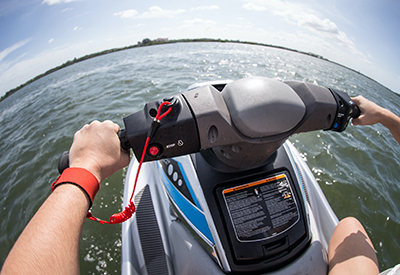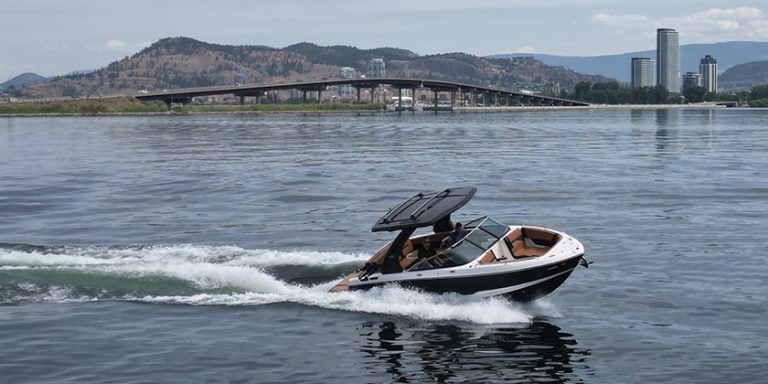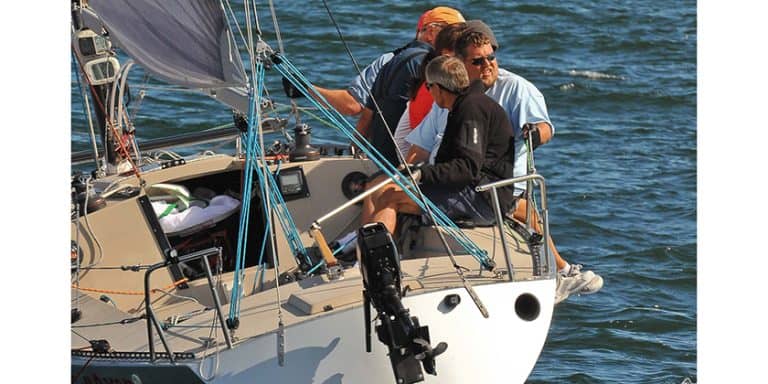News: Engine cut-off switches coming?

Transport Canada is considering requiring the use of engine cut-off switches and is asking for comments on this proposal. This requirement may be of concern to boaters of motorized vessels 8 metres or less in length. Comment periods is open to May 19, 2023.
May 10, 2023
Transport Canada is considering requiring the use of engine cut-off switches and is asking for comments on this proposal. This requirement may be of concern to boaters of motorized vessels 8 metres or less in length. Comment periods is open to May 19, 2023.
An engine cut-off switch is a device installed on a vessel that stops the propulsion system when the operator is unexpectedly ejected from the vessel. This is a safety feature that protects operators from the spinning propeller.
The switch also stops the vessel from moving through the water without an operator controlling it. These switches are usually connected or “linked” to the operator via a mechanical lanyard, like a coiled cord clipped onto the operator or via a wireless connection.
Existing requirements
Currently, Canada only requires engine cut-off switches be installed on personal watercraft, but many manufacturers have been installing the switches on vessels for years due to their safety benefits. The switches are even more common these days as they have been required by the United States (U.S.) since 2019.
As of 2019, the U.S. requires manufacturers to install engine cut-off switches on recreational vessels that:
• are less than 26 feet (8 metres)
• can produce at least 115 pounds (511 Newtons) of static thrust or 3 horsepower (2.2 Kilowatts), and
• have a primary helm station that isn’t in an enclosed cabin
As of 2021, the U.S. now requires vessel operators to link themselves to an engine cut-off switch if their vessel includes one.
What we’re proposing
To increase boater safety and align Canadian requirements with the U.S., Transport Canada may introduce requirements so that engine cut-off switches are installed on new vessels that:
• are less than 8 metres (26 feet)
• have an engine or engines that can produce at least 511 Newtons (115 pounds of force) of static thrust or 2.2 Kilowatts (3 horsepower) of power in total, and
• have a primary helm station that isn’t in an enclosed cabin
We may also require operators to link themselves to an engine cut-off switch if their vessel fits the description above and already has an engine cut-off switch.
Have your say
To participate:
• Read the proposal to learn more about the changes we’d like to make
• Fill out our short survey
• Please go to “register” at the top of the page or sign in
• Participate in our discussion forum through the “Have your say” tab. The forum will be open until May 19, 2023
• You can also submit your comments in a Word or PDF document through the “Submissions” tab before May 19, 2023. You can upload more than one document.
• Send us your comments via email: MSSRegulations-ReglementsSSM@tc.gc.ca before May 19, 2023, and include “Engine Cut-Off Switches” in the subject line




























